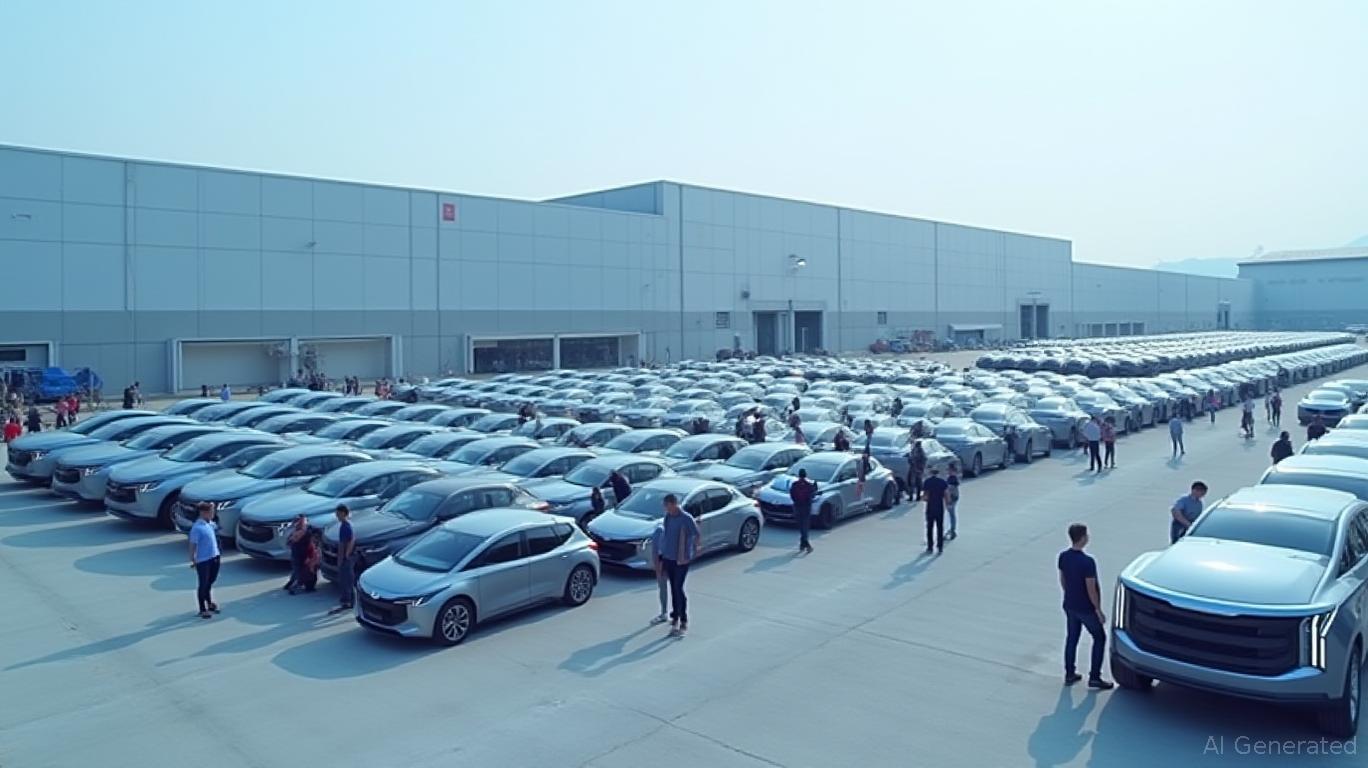Chinese Automakers in Europe: The Electrifying Path to Dominance
The European electric vehicle (EV) market is undergoing a seismic shift. Chinese automakers, once peripheral players, are now at the forefront of this transformation, leveraging advanced battery technology, aggressive pricing strategies, and a global manufacturing footprint to carve out a lasting position in Europe's premium EV landscape. For investors, this presents a compelling opportunity to capitalize on the rise of a new generation of automotive leaders.

Market Share Surge: From Exports to Local Production
Chinese automakers like
, Geely, and have rapidly increased their presence in Europe, driven by a combination of cost advantages and technological innovation. In 2024, Chinese EV exports to the EU surged by 59%, outpacing regional competitors. BYD alone narrowly overtook in April 2024 with 7,231 registrations in Europe, a milestone that underscored its growing appeal.However, tariffs and trade barriers have pushed Chinese manufacturers to rethink their strategy. BYD's $1 billion factory in Turkey, set to begin production in late 2025, exemplifies this pivot. By manufacturing locally, Chinese firms can bypass EU tariffs of up to 35%, positioning themselves to supply the continent tariff-free. This move is part of a broader plan to double their overseas manufacturing capacity in Europe by 2026.
Technology Leadership: The Battery Advantage
The heart of this competitive edge lies in battery technology. Chinese firms dominate the global EV battery market, with BYD's Blade Battery and CATL's advanced lithium-ion cells offering superior energy density and safety. These innovations allow Chinese automakers to produce EVs at a cost 30–40% lower than European rivals, enabling aggressive pricing even after tariffs.
For instance, BYD's Seagull model, priced at €20,000, has become a bestseller in Europe, outpacing models from Renault and Volkswagen in affordability. Meanwhile, its YangWang premium line targets affluent buyers, signaling an ambition to challenge Tesla in high-margin segments.
Supply Chain Resilience: A Global Network
Beyond batteries, Chinese automakers are building end-to-end supply chains. Domestic partnerships with companies like Contemporary Amperex Technology (CATL) and Gotion High-Tech ensure steady access to critical minerals and components. This vertical integration contrasts sharply with European automakers, which often rely on global suppliers vulnerable to geopolitical disruptions.
Furthermore, Chinese firms are expanding production in tariff-friendly regions like Thailand, Brazil, and Indonesia, creating a web of manufacturing hubs to serve global markets. This decentralized approach mitigates trade risks and ensures cost competitiveness.
Investment Opportunities: Where to Look
Battery Technology Leaders:
Companies like CATL (ticker: 300750.SZ) and BYD's battery division are pivotal to the EV revolution. Their R&D in solid-state and lithium iron phosphate (LFP) batteries could unlock further cost reductions.Chinese Automakers with European Exposure:
BYD (002594.SZ) and Geely (0175.HK) are direct plays on the European market expansion. BYD's stock has outperformed Tesla's over the past five years, reflecting its strong execution.EV Supply Chain Components:
Firms supplying motors, semiconductors, and charging infrastructure—such as ZTE (000063.SZ) and Wuhan Guoshen—are critical to the ecosystem.European EV Startups with Chinese Ties:
Brands like NIO (NIO), which collaborates with local partners in Norway, offer exposure to premium EV demand.
Risks and Challenges
- Trade Friction: EU tariffs and subsidies for local manufacturers remain hurdles.
- Brand Perception: Chinese brands still face skepticism in premium markets like Germany.
- Regulatory Shifts: Stricter emissions rules or intellectual property disputes could disrupt growth.
Conclusion: A Decade of Dominance Ahead
Despite these risks, the long-term trajectory is clear. Chinese automakers are not just competing in Europe—they are redefining the industry. Their focus on affordability, rapid innovation, and global manufacturing networks positions them to capture a 30–40% share of Europe's EV market by 2030, up from ~5% today.
For investors, this is a generational opportunity. The EV supply chain—particularly battery tech and manufacturing plays—is the backbone of this shift. Those who bet on Chinese automakers' tenacity and technological prowess stand to benefit as the world's largest EV market continues its electrifying rise.
Investment advice: Consider overweight positions in BYD, CATL, and EV component suppliers with strong Chinese ties. Monitor EU-China trade relations and battery tech advancements closely.

Comments
No comments yet